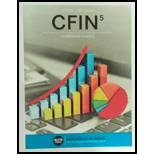
Marginal Cost of Capital (MCC) is the weighted average cost of capital for the last dollar raised in new capital. MCC of the company remains constant for some time after which it increases. This depends on the amount of additional capital raised and eventually increases as the cost of raising new capital is higher due to flotation cost. This is mostly evident in case of
Marginal cost of capital is calculated as below:
Proportion of debt in the target capital structure “
Proportion of
Proportion of common equity in the target capital structure “
After tax cost of debt, preferred stock, retained earnings and new equity is “
Breakpoint is the value of the new capital that can be raised just before an increase in the firm’s weighted average cost of capital.
Investment Opportunity Schedule (IOS) is then created to show how much money a company can invest in at different rates of return (IRR), this schedule is then merged with MCC schedule. The cost of capital at the intersection of both the schedules is the optimal cost of capital, which is used to find out the right mix of financing and therefore, the investment will be optimal. Hence, Optimal Capital Budget is that level of capital at which the marginal cost of capital is equal to the marginal revenues.
The company is evaluating a project to increase its sales. The cost of the project is $2.6 million with an IRR of 9.50%. Any portion of the project can be purchased. The company expects to raise up to $420,000 in new debt at a cost of 5% and anything above this at a cost of 7%. Similarly, it expects retained earnings of $1.3 million this year, with cost of retained earnings beingn12% and cost of any new common equity being 14%. Target capital structure is 35% debt and 65% equity. Marginal tax rate is 40%.
Want to see the full answer?
Check out a sample textbook solution
 Essentials Of InvestmentsFinanceISBN:9781260013924Author:Bodie, Zvi, Kane, Alex, MARCUS, Alan J.Publisher:Mcgraw-hill Education,
Essentials Of InvestmentsFinanceISBN:9781260013924Author:Bodie, Zvi, Kane, Alex, MARCUS, Alan J.Publisher:Mcgraw-hill Education,

 Foundations Of FinanceFinanceISBN:9780134897264Author:KEOWN, Arthur J., Martin, John D., PETTY, J. WilliamPublisher:Pearson,
Foundations Of FinanceFinanceISBN:9780134897264Author:KEOWN, Arthur J., Martin, John D., PETTY, J. WilliamPublisher:Pearson, Fundamentals of Financial Management (MindTap Cou...FinanceISBN:9781337395250Author:Eugene F. Brigham, Joel F. HoustonPublisher:Cengage Learning
Fundamentals of Financial Management (MindTap Cou...FinanceISBN:9781337395250Author:Eugene F. Brigham, Joel F. HoustonPublisher:Cengage Learning Corporate Finance (The Mcgraw-hill/Irwin Series i...FinanceISBN:9780077861759Author:Stephen A. Ross Franco Modigliani Professor of Financial Economics Professor, Randolph W Westerfield Robert R. Dockson Deans Chair in Bus. Admin., Jeffrey Jaffe, Bradford D Jordan ProfessorPublisher:McGraw-Hill Education
Corporate Finance (The Mcgraw-hill/Irwin Series i...FinanceISBN:9780077861759Author:Stephen A. Ross Franco Modigliani Professor of Financial Economics Professor, Randolph W Westerfield Robert R. Dockson Deans Chair in Bus. Admin., Jeffrey Jaffe, Bradford D Jordan ProfessorPublisher:McGraw-Hill Education





